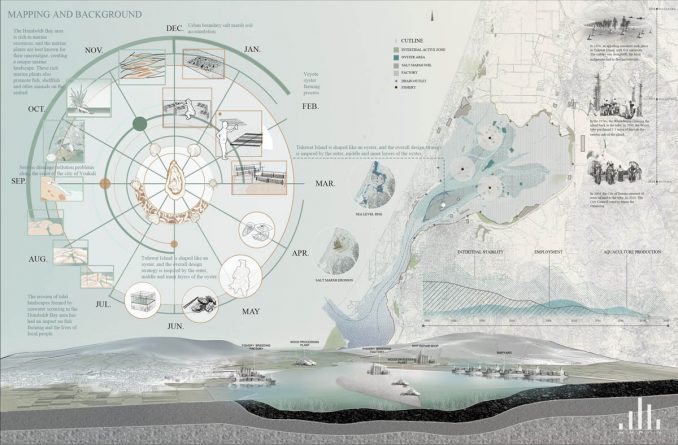
Back to Tuluwat is located in Humboldt Bay, California, USA, and focuses on improving the survival of the Veyote people on Tuluwat Island.
The Veyote are one of the few remaining Native American Indians who have lived on Tuluwat Island in Humboldt Bay for generations and have made a living from oyster-based mariculture. Humboldt Bay, located in an inlet bay off the Pacific coast, is rich in underwater life and is home to a variety of fish, marine plants and molluscs. One of the most well-known species is macroalgae, which forms a magnificent textural landscape on the sea floor. The symbiosis of macroalgae and oysters in the bay will be the focus of this project.
From the middle of the 19th century to the beginning of the 20th century. The Veyote people gradually moved out of the area due to massacres, heavy industrial pollution of the bay, and stagnation of the bay’s fishing industry.
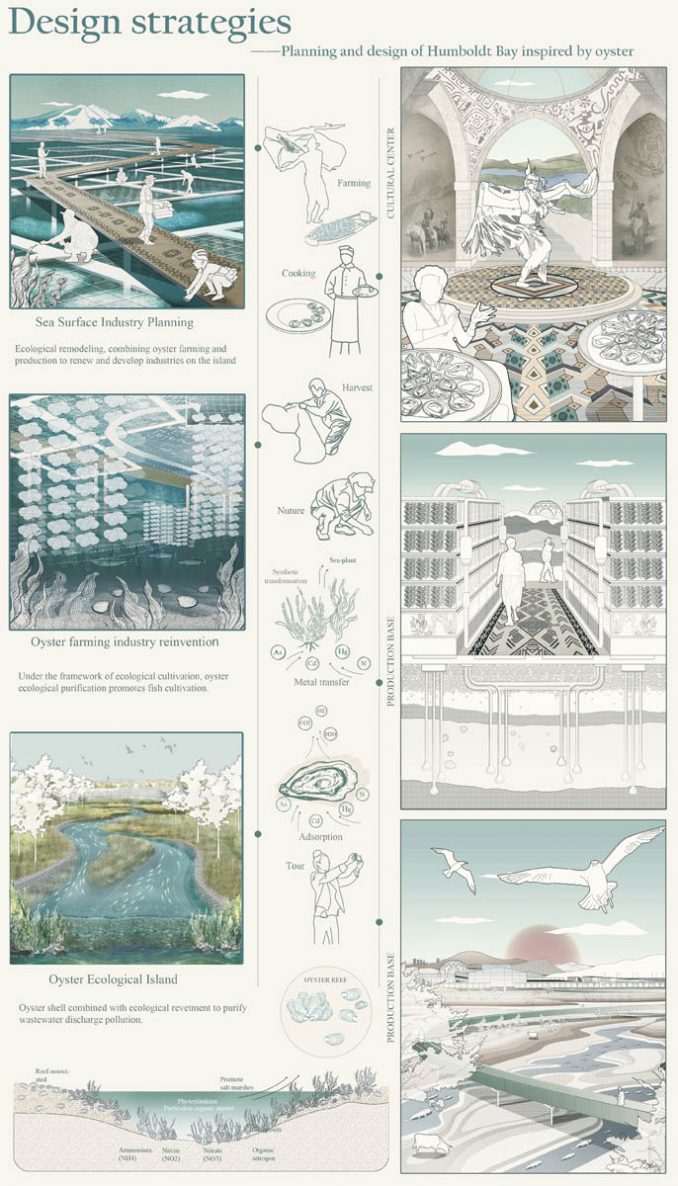
Based on the decline of the Veyote people, the design proposes a large-scale plan for the overall environment of Humboldt Bay, taking the famous local oyster farming industry as the starting point, carefully studying the model of the farming industry, and got the design inspiration from the structure of the oyster itself.
The planning was divided into three levels – the outer edge protection layer, the central energy exchange layer and the inner pearl layer. The three design strategies corresponding to the oyster structure are.
1、The outer layer plays the role of communication and exchange between the urban interface and the transition of the bay area, and the main means will be the rearrangement of agricultural land and the sewage treatment of the urban inlet.
2. The central energy exchange layer mainly involves the interaction between submarine tidal energy and the renewal of the oyster farming industry, and the existing oyster farming mode will be modified and redesigned.
3、The interior of the project is mainly for the cultural rejuvenation of the island and is closely integrated with the oyster farming industry, promoting the return of the Veyote people to the island of Tuluwat from three aspects: economy, ecology and culture.
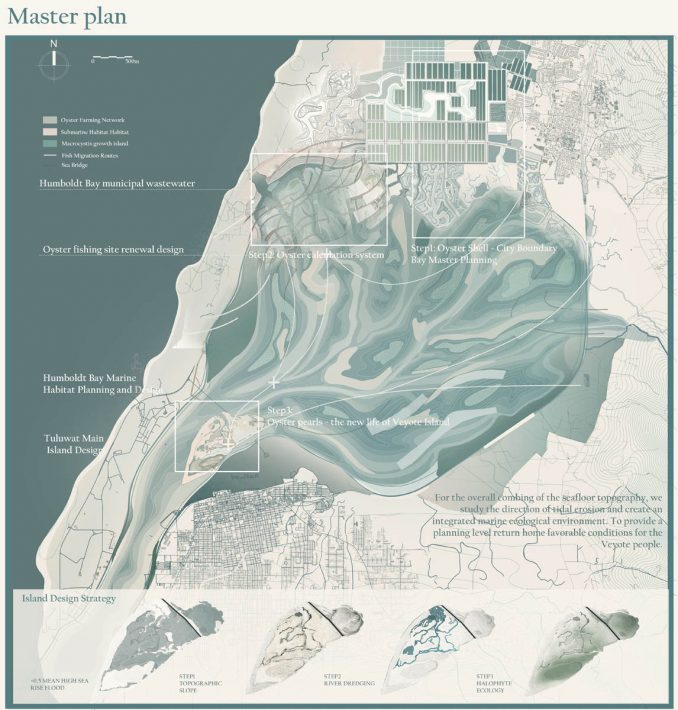
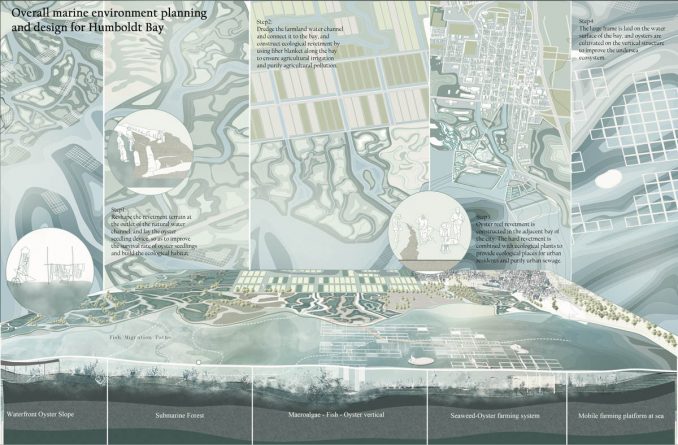
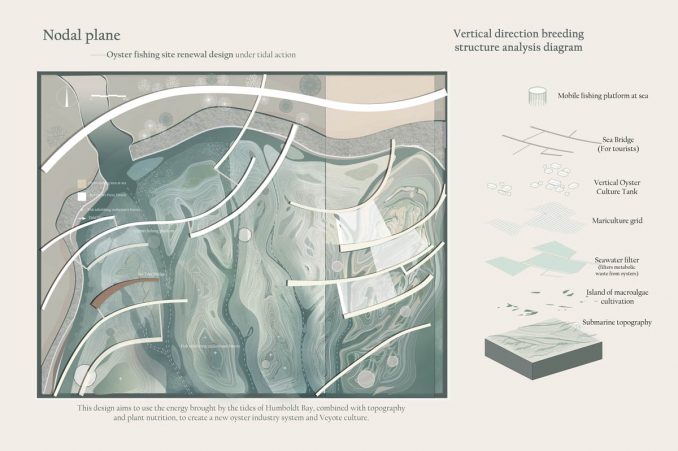
In summary, the project takes the oyster, on which the Veyote people depend, as the source of inspiration, and gives full play to the guidance of the oyster structure for the whole bay area and implements it into the specific site design, thus completing the re-planning of the whole bay and playing a good vision of the future return of the Veyote people to Tuluwat Island.
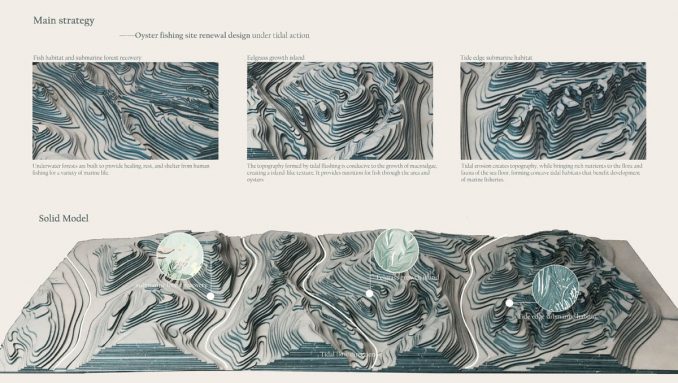
Student Project | Back to Tuluwat | Qiyu Wang & Zhenyu Wu
Student Names: Qiyu Wang (Beijing Forestry University); Zhenyu Wu (Beijing University of Agriculture)
Advisor: Lin Chen (Nanjing Forestry University)
